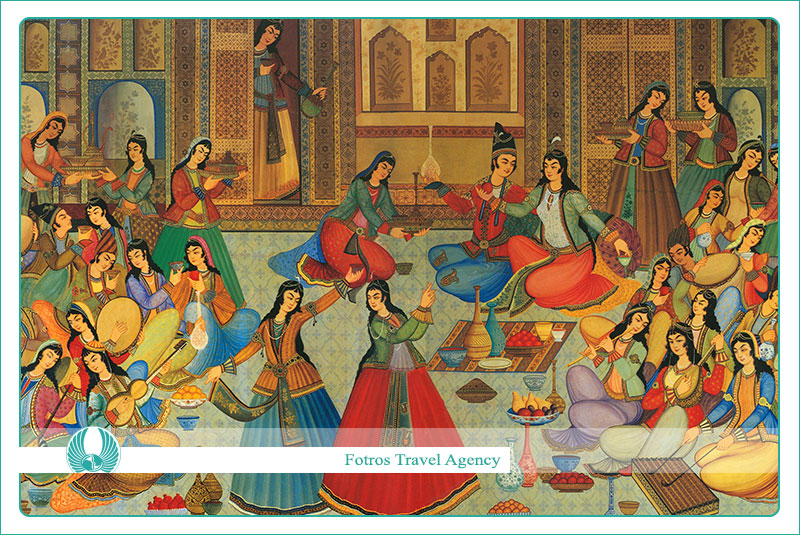
Ancient Persian Celebrations
In ancient Persia, similar to the present day, the calendar has been solar and based on seasons. In that time, each day of a month has a specific name and when the name of the month and the day were the same, people celebrate, so, there were 12 celebrations. For example, “Mehregan” was the day “Mehr” of the month “Mehr”, this celebration was somehow similar to the New Year festivity and was the most important celebration after that. In that event, people thanked God for all of his affluences. Another ceremony was called “Sepandarmazgan” which was the day of “Esfand” of the month of “Esfand” when the men presented gifts to their women. The minority in Iran who believe in Zoroastrianism still celebrate these two events.

In addition, there were many more celebrations. Some of them are still celebrated, though with some deviations. “Norouz” (literally means: new day) is the most important one and a national holiday when people celebrate New Year for about two weeks. Families, relatives and friends gather and visit each other during this time. Older family members give gifts (especially paper money) to the younger ones. And it’s also a key tradition to set a tablecloth with seven items that their Persian names start with the sound of /s/ so it’s called Haft-sin (literally means Seven S!) including Sib (apple), Serkeh (vinegar), Sir (garlic) and some more.

On 13th of the first month (Farvardin) and after New Year period, people go to countryside as picnic, since at old times this day was believed to be sinister and people should spend the day outdoors. There is also an interesting tradition that young single individuals tie grasses to get married till next year!
Another celebration is “Yalda Night” which is the last night of fall and is the longest night of a year. Family members and relatives gather and read Hafez’s poetries and try to guess their fortunes based on the poems. Pomegranate, watermelon and nuts are served to help to pass this so-called longest night.

“Chaharshanbeh Souri” is the last Tuesday night when people light fire and jump over it and wish good health and happiness. As you see, something that is common in most of ancient Persian celebrations is their relation with nature and natural phenomena like seasons.

Bahareh Yousefian
Related Tags:
We love to hear your comments